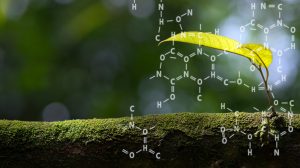Definition
noun, plural: symplasts
(botany) A system of interconnected protoplasts contained by plasmalemma, and linked by plasmodesmata
Supplement
In vascular plants, there are two pathways through which water and ions passes from the root hair to xylem tissues. These routes involve apoplast and symplast. The apoplast is the space formed by a system of nonliving components, particularly cell walls and intercellular material. The water and ions can pass through this pathway freely. The presence though of a Casparian strip would interrupt the movement of water and ions. Because of the suberin in the Casparian strip, the passive flow of materials, e.g. water and solutes, into the stele is prevented. Water and nutrients absorbed by the roots are blocked from entering the stele via the apoplast. As a result, solutes have to go through the symplast. Since the symplast is comprised of a living component, the protoplast, there would be selective passage of solutes. This is important to the plant because some solutes may harm the plant. Materials pass through from one protoplast to another (or from one cell to another) via the plasmodesmata.
Compare:
- apoplast (botany)
See also:
Related term(s):
- symplasty
Related form(s):







